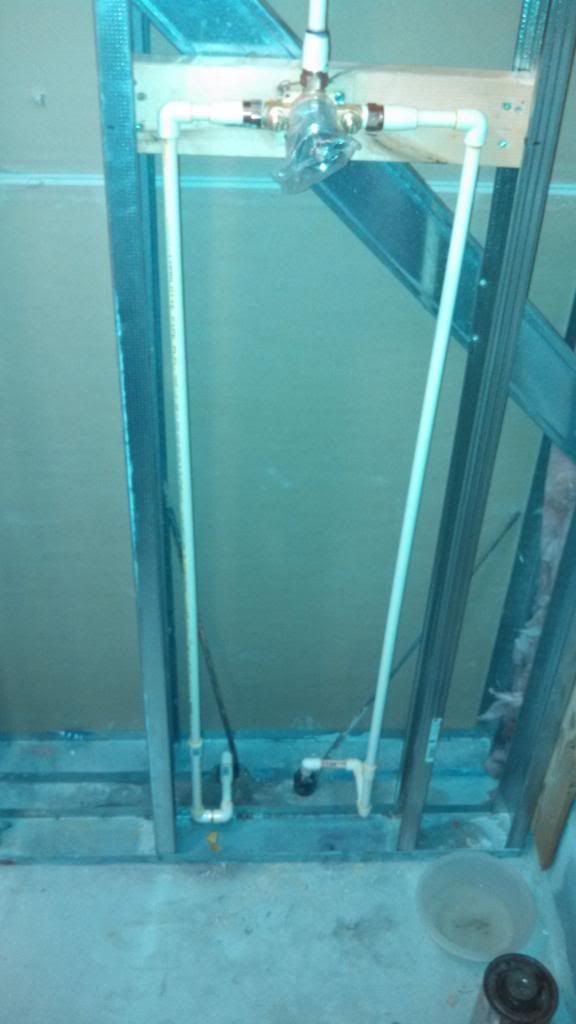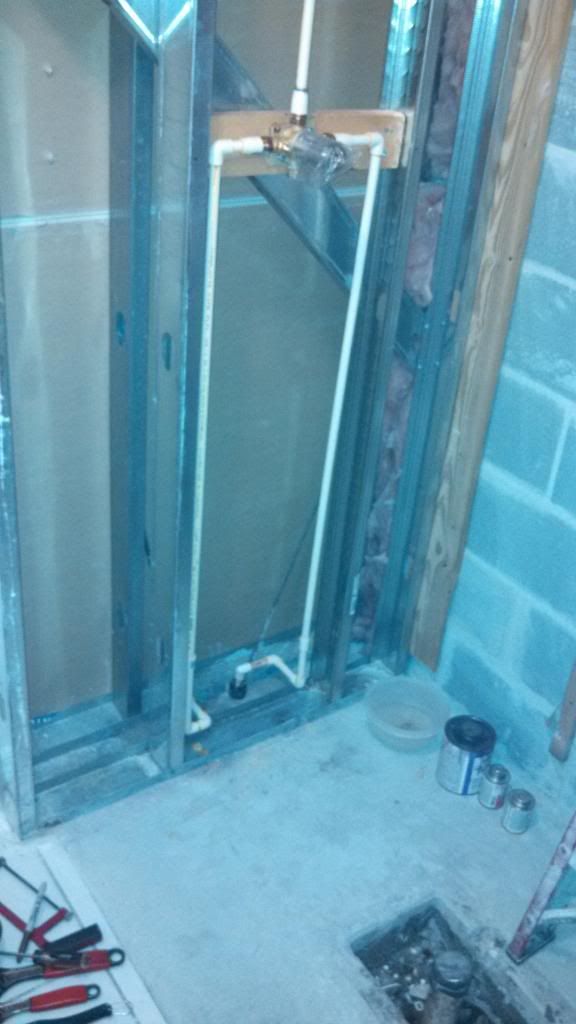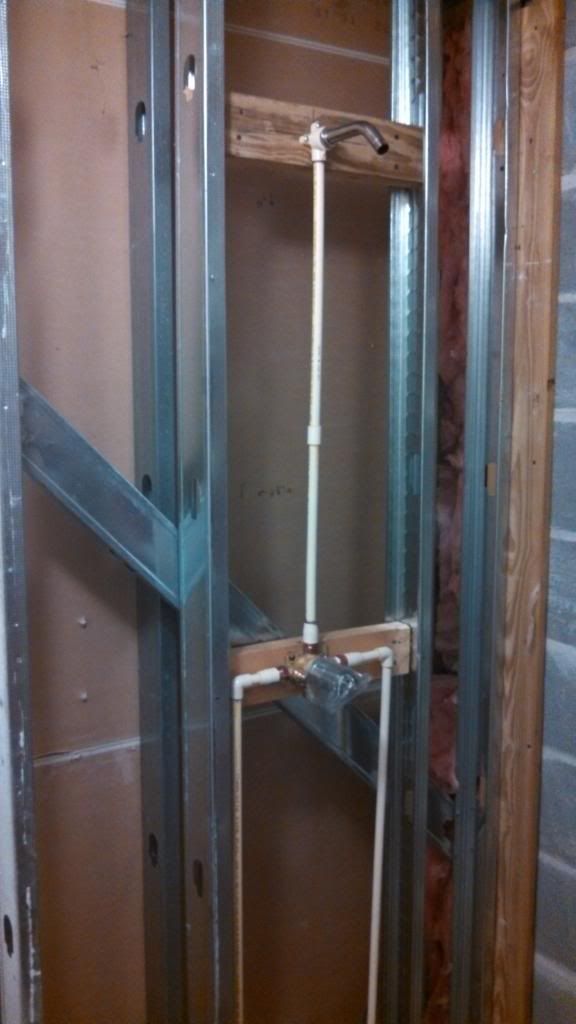snrusnak
Well-Known Member
Hi all. First of all, thanks in advance!
I'm NOT a plumber, but have a fair grasp on the job.
I am redoing our master shower. I bought and installed a glacier bay shower valve. My house is plumbed with 1/2" cpvc. I bought all the fittings and plumbed it tonight and when I turned the water on I had a fast drip from the cold side and slow drip from the hot side. I was told or read somewhere that the all plastic threaded fittings are not as good as the composite(plastic/metal) threaded fittings due to different rates of expansion with hot pipe, so I bought the composite metal/plastic threaded couplers. I thought I was doing the "right" thing, now I'm not sure if I used the correct fittings.
I used thread tape and finger tightened the fittings then gave about another half turn with a wrench. Both leak. Here's some pics:
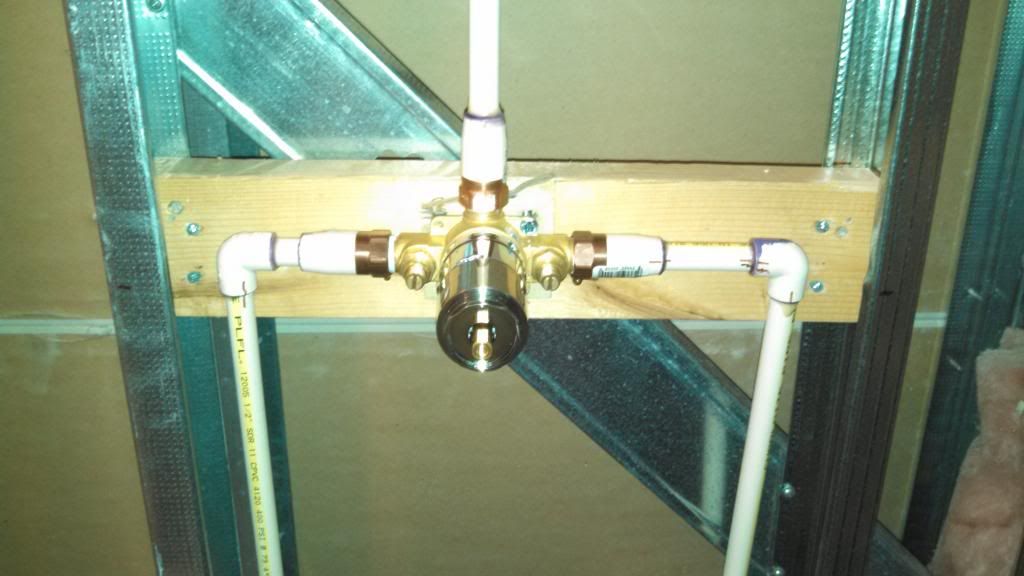
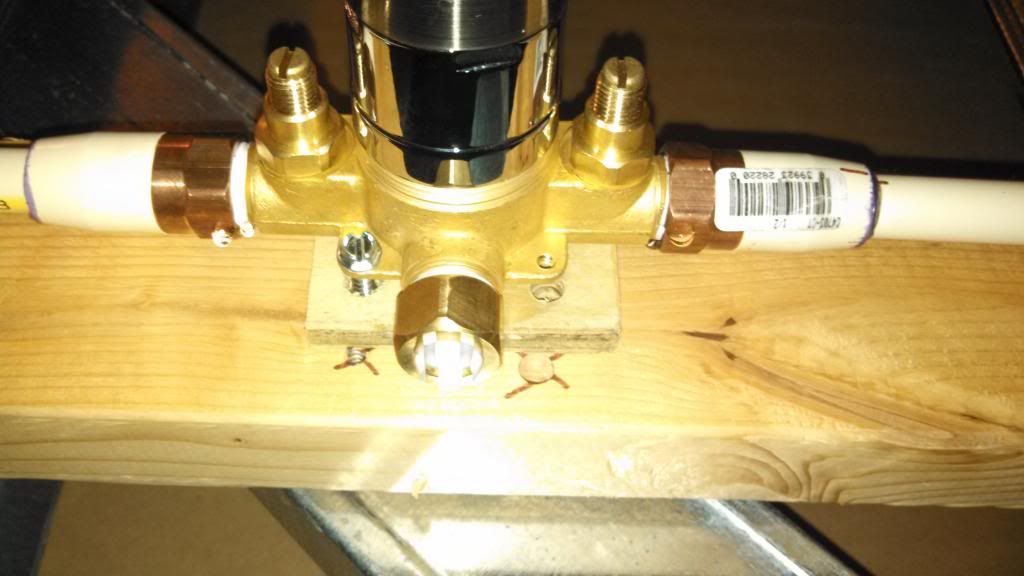
You can see the drips in the last pic. I'm wondering if I'm using the wrong type fittings? I think they say "FTP" or something like that on them, which I have no idea what that means. I just thought nothing of it, but now am wondering if it's to adapt to a different type of pipe or something.
I cut and capped the pipes for now, but need to finish the job. I bought these fittings as recommended by the guy at home depot, but don't know that they are the right fittings for the job(I don't think most of those guys no any more than I do). Here's a pic of the fittings:


It has a rubber washer. I don't know if that's good or not, I'd think it's bad to use anything rubber in an inaccessible area due to the fact it will eventually fail.
Any help on what fittings I should use, or what I'm doing wrong? Thanks all.
Also, I read some really bad reviews on glacier bay products. Something about the internals of the valve not being up to par, or being old technology. I have this:
http://www.homedepot.com/p/Glacier-...-F1AA4535BNV/100644762?N=n7Z12l2#.UaaxdUDVD5A
Any insight? I've already installed it and basically plumbed it. I don't want to have major issues in 1 year though. I read some reviews and it seemed like an ok product.
I'm NOT a plumber, but have a fair grasp on the job.
I am redoing our master shower. I bought and installed a glacier bay shower valve. My house is plumbed with 1/2" cpvc. I bought all the fittings and plumbed it tonight and when I turned the water on I had a fast drip from the cold side and slow drip from the hot side. I was told or read somewhere that the all plastic threaded fittings are not as good as the composite(plastic/metal) threaded fittings due to different rates of expansion with hot pipe, so I bought the composite metal/plastic threaded couplers. I thought I was doing the "right" thing, now I'm not sure if I used the correct fittings.
I used thread tape and finger tightened the fittings then gave about another half turn with a wrench. Both leak. Here's some pics:


You can see the drips in the last pic. I'm wondering if I'm using the wrong type fittings? I think they say "FTP" or something like that on them, which I have no idea what that means. I just thought nothing of it, but now am wondering if it's to adapt to a different type of pipe or something.
I cut and capped the pipes for now, but need to finish the job. I bought these fittings as recommended by the guy at home depot, but don't know that they are the right fittings for the job(I don't think most of those guys no any more than I do). Here's a pic of the fittings:


It has a rubber washer. I don't know if that's good or not, I'd think it's bad to use anything rubber in an inaccessible area due to the fact it will eventually fail.
Any help on what fittings I should use, or what I'm doing wrong? Thanks all.
Also, I read some really bad reviews on glacier bay products. Something about the internals of the valve not being up to par, or being old technology. I have this:
http://www.homedepot.com/p/Glacier-...-F1AA4535BNV/100644762?N=n7Z12l2#.UaaxdUDVD5A
Any insight? I've already installed it and basically plumbed it. I don't want to have major issues in 1 year though. I read some reviews and it seemed like an ok product.

























































